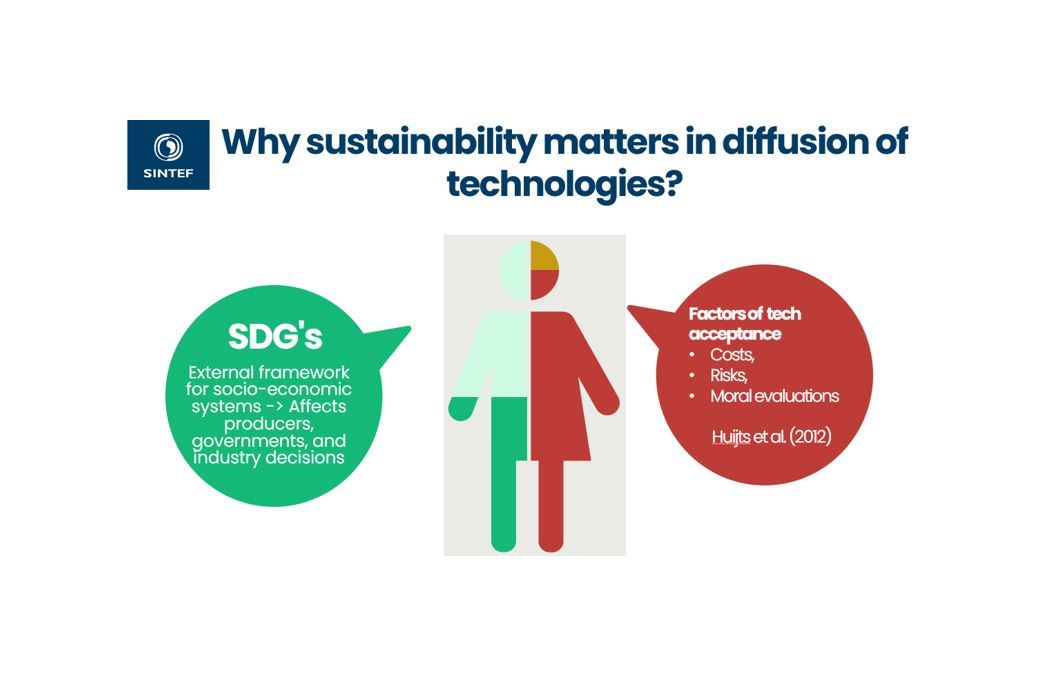eaSi-system - Framework for systematic SDG impacts assessment
Scenario creation & upscaling

We use three different methods to identify scenarios and the upscaling potential of the chosen technologies:
- Policy plans: Our scenarios created from policy plans are based on announced goals from governments, policy-makers and industries. These types of scenarios are designed bottom-up, and not intended to achieve a desired outcome. For these scenarios, we analyze documents such as industry and policy roadmaps, policies and strategies, INDC, reports from industry associations.
- Econometric diffusion modelling: For the econometric model, we use historical data to estimate learning curves for new technologies, see for example (Link to publication). Here, we assess how sustainability characteristics affect the diffusion of the technology. This technique is not suitable for very low TRL technologies. Low TRL technologies require a combination with scenario plans and scenario fingerprints.
- Qualitative scenario fingerprints: For the scenario fingerprints, a qualitative method is used. This approach identifies driving forces that determine future technology adoption, for which we use a PESTEL analysis. After that, expert knowledge is used to define movement of driving forces in four different scenarios (scenario fingerprints). These scenario fingerprints are used to develop the scenario storyline.